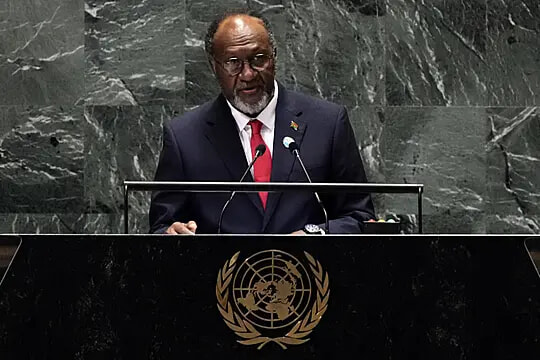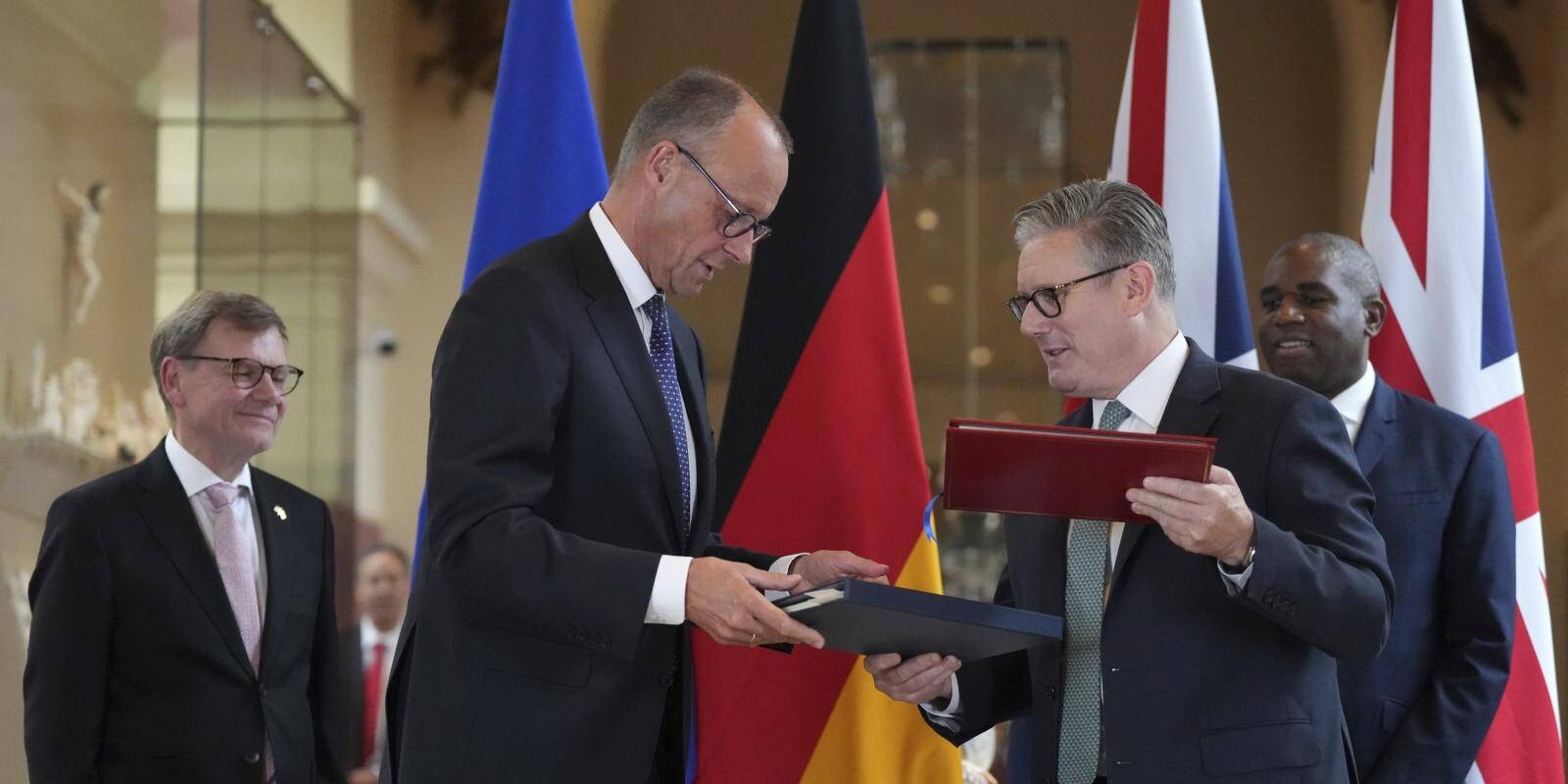
U.K. and Germany Sign First Bilateral Friendship/Defense Treaty Since WWII
History in the making.
Published July 23, 2025
Advertisement
Advertisement
1. A Treaty Eighty Years in the Making
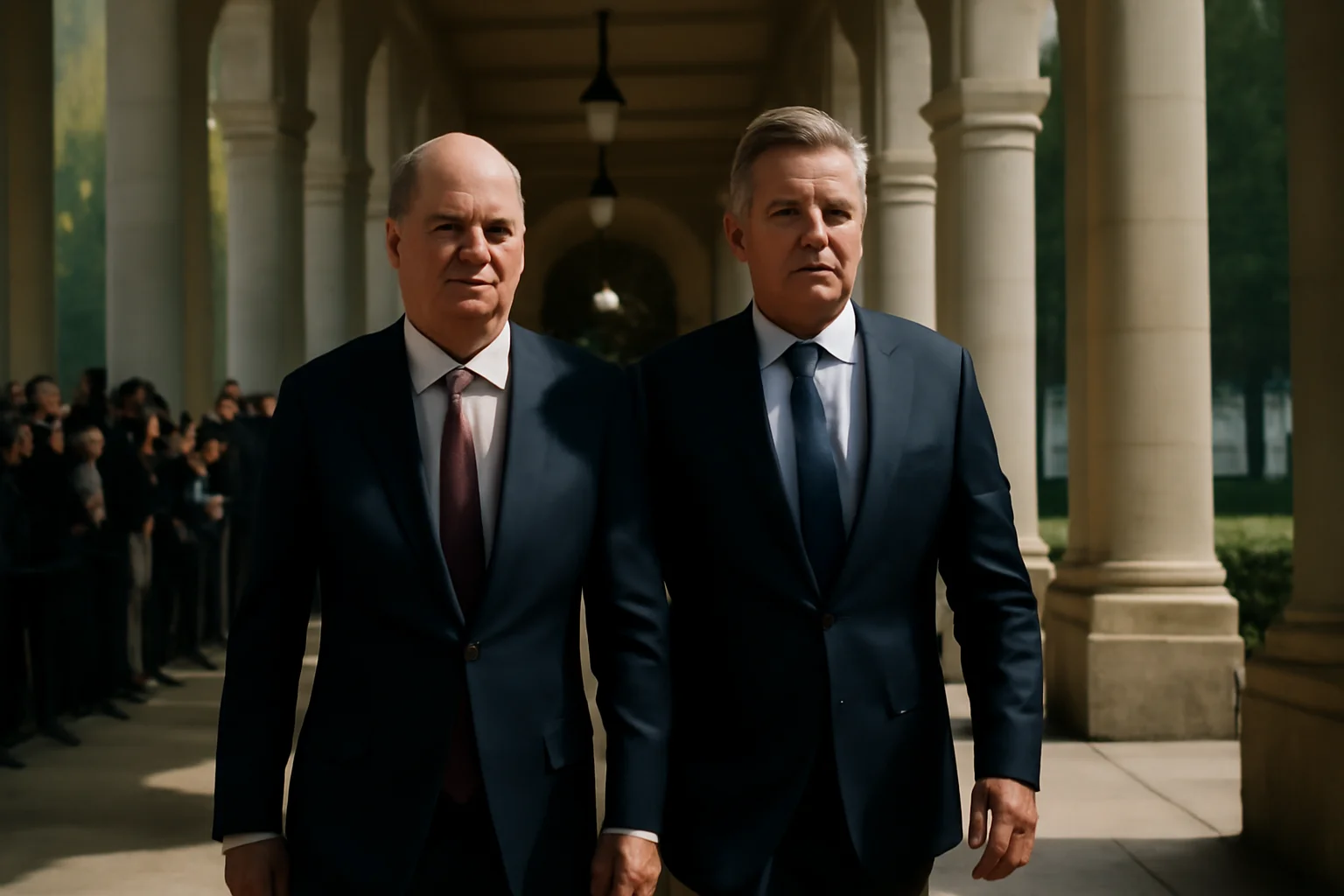
The morning sun rose over London as Chancellor Friedrich Merz’s plane touched down, signaling the beginning of a day that would reshape the European landscape and echo through history.Nearly eighty years after the last world war, the United Kingdom and Germany signed a new treaty, breaking a long diplomatic drought between two of Europe’s most influential powers.This agreement, the Kensington Treaty, is lauded as both “historic” and “the first of its kind” since World War II, symbolizing a deliberate effort to move beyond old rifts and confront a new era of challenges.At the heart of the ceremony was the V&A Museum, a nod to Queen Victoria and her German consort, Prince Albert, representing the fusion of British and German legacies and the enduring relationship between the nations.Chancellor Merz, making his inaugural visit to the UK since taking office, called the moment overdue and vital, referencing Britain’s departure from the European Union as a driving force behind the renewed partnership.Both countries, battered by the turmoil of Brexit and the winds of war in Ukraine, saw in each other a kindred resolve to strengthen continental ties while remaining sovereign.Prime Minister Keir Starmer underscored this “new chapter,” emphasizing that shared values, mutual challenges, and a commitment to unity are at the core of the treaty’s ambitious agenda.Observers from around the world watched as Merz and Starmer—representing generations shaped by division and now seeking alignment—pledged to confront threats to Europe’s security and prosperity together.The Kensington Treaty is not just a statement of intent; it lays out seventeen major projects, spanning from defense to education, energy to migration, setting the stage for a deeper and more pragmatic relationship.This renewed alliance marks a critical juncture for both Britain and Germany, as each navigates a rapidly changing geopolitical environment where unity is no longer optional, but imperative.What began as a ceremonial signing quickly revealed itself as a blueprint for action—a response to the pressing demands of a continent in flux.
Advertisement
2. Turning the Page on a Divided Europe
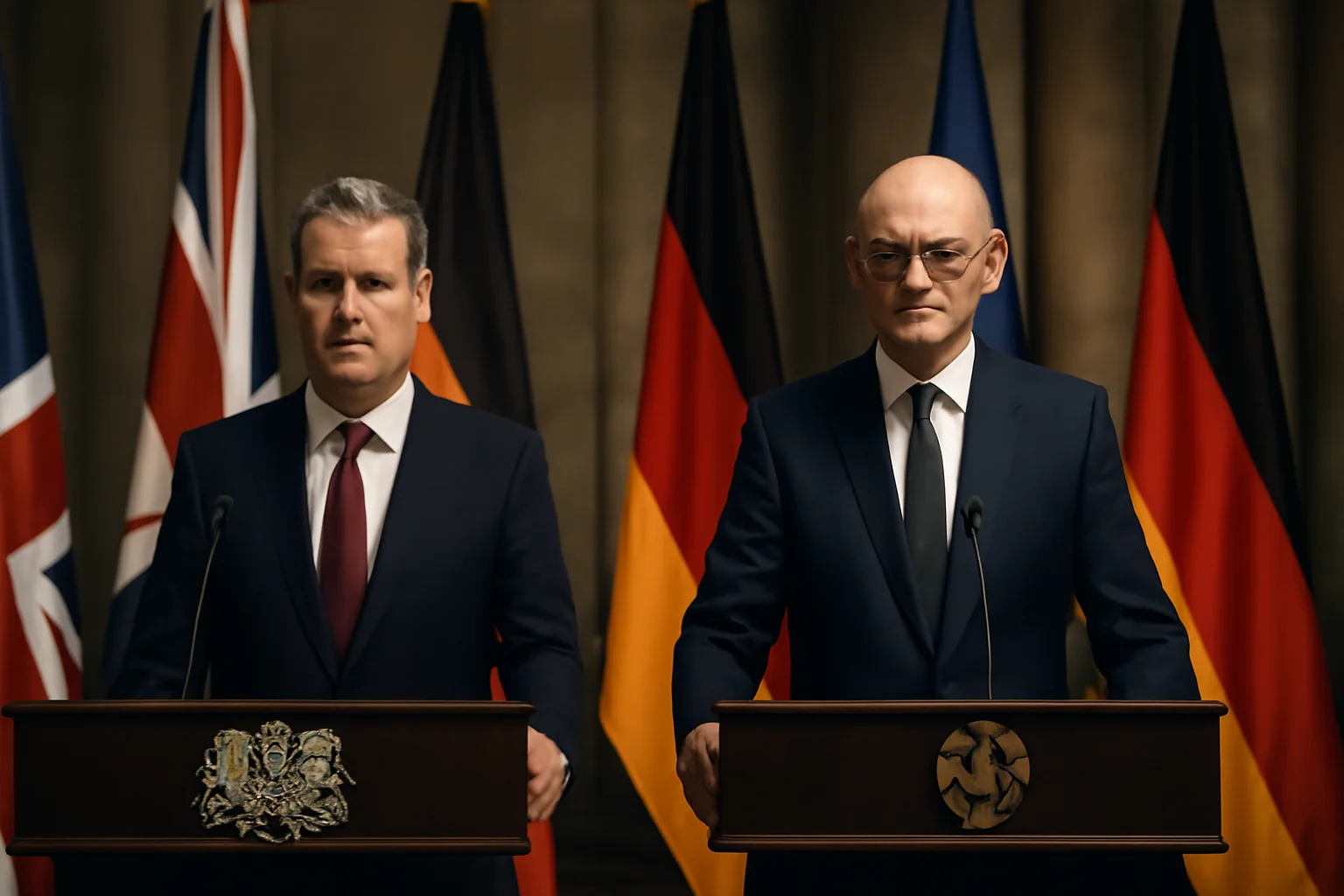
As Merz and Starmer faced the world’s media, their shared language was one of determination and opportunity, reflecting a Europe no longer willing to be held back by the divisions of its recent past.The treaty follows closely on the heels of President Emmanuel Macron’s visit to London, signaling an emerging “E3”—the trilateral cooperation of the UK, Germany, and France.With threats to European security multiplying—from Russia’s ongoing aggression in Ukraine to uncertainty about America’s commitment to NATO—these three powers are moving to align migration, defense, and economic strategies.The British-German accord was spurred by a recognition that, after Brexit, the continent could not afford to let old wounds fester; instead, it was time to forge new bonds across borders.Starmer made clear his intent to “reset” relations with Europe, ruling out a return to the EU but seeking robust collaboration in areas where interests converge.Berlin, meanwhile, sees the UK as too important to exclude from European decision-making, with Merz repeatedly voicing regret over Brexit while advocating for even closer ties.Throughout the signing ceremony and subsequent press conference, both leaders emphasized the urgency of responding to Russia’s destabilization of the European security order.This new framework represents more than symbolic reconciliation; it is an institutional pledge to work together on military, economic, and humanitarian projects—an “expression of shared aims and values.”Annual meetings of ministers and regular summits between leaders will ensure that the partnership is not a fleeting gesture, but a living, evolving commitment to collective action.At a time when the world seems more unpredictable than ever, the UK and Germany are signaling to allies and adversaries alike that unity can be engineered as deliberately as any weapon or treaty.This mutual resolve stands in sharp contrast to the fragmented, hesitant Europe of just a few years ago—a continent now preparing to meet its challenges head-on.
Advertisement
3. The Shadow of War

If the treaty was inspired by hope, it is shaped by fear—specifically, the shadow of war on Europe’s eastern flank and the realization that the old Atlantic security umbrella is full of holes.Chancellor Merz called security the “thread running through the treaty,” as both countries recognize Russia as “the most significant and direct threat” to their safety and sovereignty.The mutual assistance clause is bold: the UK and Germany have pledged to come to each other’s aid—including militarily—if either faces an armed attack, echoing the language of NATO while reaffirming their bilateral resolve.For Britain, recently separated from the EU, the ability to wield influence in continental defense matters is both a reassurance and a necessity.Germany, for its part, has embarked on its most ambitious rearmament since the Cold War, aiming to raise defense spending to 3.5% of GDP by 2029—a sign of just how seriously it takes the present danger.But neither Merz nor Starmer claim this treaty is a magic shield; rather, it is a pragmatic step in a shifting world where American leadership can no longer be taken for granted.The partnership is buttressed by tangible projects: joint development of long-range precision weapons, deep exchanges on arms policy and nuclear issues, and commitments to strengthen the eastern flank of NATO.Both leaders were careful to point out that their alliance does not replace or undermine NATO, but rather complements it by adding an extra layer of coordination and resolve.This security focus is not just rhetoric; it is a recognition that Europe must be ready to defend itself, and that no single nation can meet these threats alone.As European capitals grow increasingly anxious about Washington’s “America First” pivot, London and Berlin are stepping up as pillars of a new security architecture.Against the backdrop of war in Ukraine, these moves are not just defensive—they are transformative, setting the stage for a more independent and unified Europe.
Advertisement
4. Building Bridges
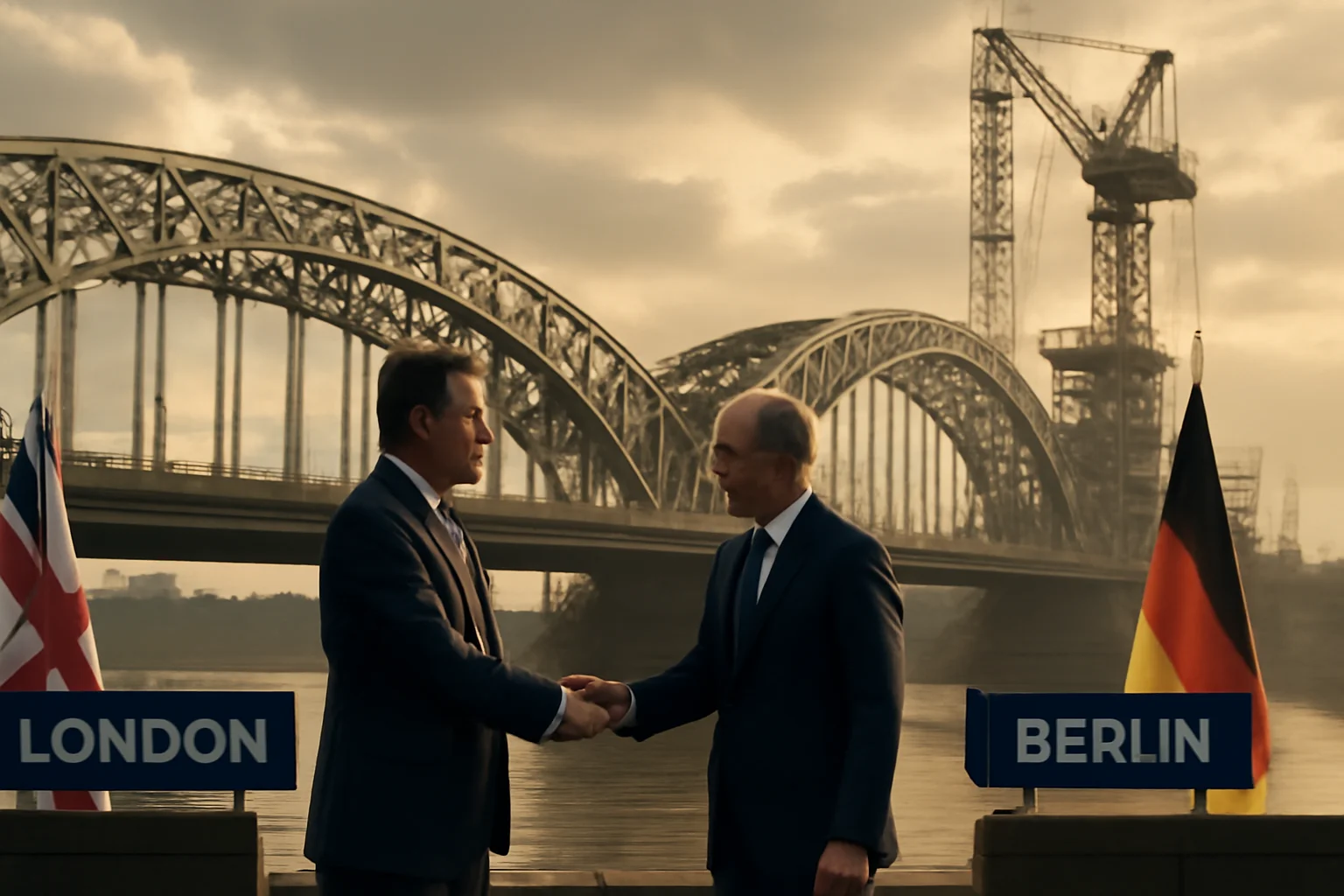
Beyond tanks and treaties, the Kensington agreement is also a bet on economic recovery, connectivity, and the power of science and innovation to restore Europe’s influence.Merz and Starmer highlighted a sweeping agenda to boost bilateral trade, leverage their nations’ industrial strength, and drive technological development across key sectors.Plans for a direct rail link between London and Berlin symbolize not only logistical ambition but also the intent to stitch together two of Europe’s greatest capitals with new infrastructure.The treaty includes joint efforts to promote international sales of co-produced equipment, such as the Typhoon Eurofighter jet and Boxer armored vehicle, in a bid to capture global markets.Starmer announced investments worth over £200 million, much of it focused on new infrastructure, North Sea green energy, and enhanced scientific cooperation.Both countries are eager to position themselves as leaders in the fight against climate change, reiterating their commitment to the Paris Agreement’s 1.5°C target.Scientific research partnerships, streamlined visa regimes for researchers and students, and support for cross-border startups all form part of the treaty’s blueprint for growth.The agreement promises to make it easier for UK passport holders to use German e-gates and to facilitate school exchanges, ensuring that the next generation is not limited by the political upheavals of the past.Britain and Germany see these measures as not only tools for prosperity but also bulwarks against the forces of division and stagnation that threaten both societies.In an era when global supply chains are fragile and economic uncertainties abound, the value of reliable, innovative partnerships has never been clearer.By aligning economic strategy with security imperatives, the treaty offers a holistic vision for European resilience—a vision born out of crisis, but pointed firmly toward the future.
Advertisement
5. Weapons, Warnings, and a War on Europe’s Doorstep

It was only at this point that the true scope of the treaty’s military ambition was fully revealed—a response crafted for an age of open conflict and shifting alliances.Starmer and Merz discussed detailed plans to send more weaponry to Ukraine, building on the recent announcement by President Trump to supply NATO allies who would, in turn, bolster Kyiv’s defenses.The agreement goes further, pledging joint production of critical defense exports, including next-generation missiles, and establishing a multinational command headquarters to coordinate support for Ukraine.A new German defense startup, Stark, will open a factory in England, signifying deeper integration of the two nations’ defense industries.The treaty outlines plans for “joint export campaigns” designed to win international orders for their jointly-made equipment, a reversal of years of hesitation that saw Germany block sales to countries like Saudi Arabia and Turkey.Behind closed doors, military planners from more than thirty nations have been working intensively on operational plans for a potential ceasefire in Ukraine, with British and German officers playing leading roles.The commitment to securing Ukraine’s skies and providing logistics and training is described as “the most developed” it has ever been, ready to be activated when political conditions allow.This level of cooperation is unprecedented for the two countries and underscores the seriousness with which they regard the Russian threat—not just to Ukraine, but to the entire European order.It is also a signal to both allies and adversaries: the era of passivity is over, and Europe’s powers are rearming for a new generation of warfare.In the face of tragedy and uncertainty, the treaty is not simply a gesture of goodwill but a statement of readiness for the battles, both literal and figurative, that lie ahead.
Advertisement
6. Migration: Crisis, Controversy, and Coordination

While defense headlines dominate, the treaty’s provisions on migration reveal a continent still struggling to balance security with humanity.Both countries pledged to combat irregular migration, focusing on cracking down on people-smuggling gangs and closing enforcement gaps that have plagued the English Channel crossings.Germany agreed to tighten its laws by the end of the year, allowing authorities to seize small boats and engines intended for illegal crossings—an act Starmer called a “clear sign we mean business.”The treaty also calls for closer coordination with France, proposing a three-way pact to mount a united response to migration challenges and reduce pressure on border regions.The leaders acknowledged the political volatility of migration, especially as far-right parties in Germany and Britain exploit public anxieties for electoral gain.Measures to support youth mobility, including simplified school exchange trips and educational programs, are designed to foster greater understanding and counter the toxic narratives that surround migration debates.While the treaty stops short of creating a formal military or migration bloc, it aligns the UK and Germany more closely with France, ensuring that policy moves forward in concert rather than in competition.Starmer and Merz were candid about the limits of their efforts, admitting that numbers are down but the “target” has not yet been reached—signaling the need for ongoing vigilance.Beyond enforcement, both countries committed to supporting refugees who have strong family ties, echoing recent agreements with France to establish fairer, more humane processes.The issue remains fraught, but the treaty’s approach is as pragmatic as it is ambitious: address the root causes, close the enforcement loopholes, and provide legal pathways for those in genuine need.As Europe contends with waves of displacement and the specter of new conflicts, these coordinated efforts mark a critical step toward both security and compassion.
Advertisement
7. Brexit, Business, and Beyond
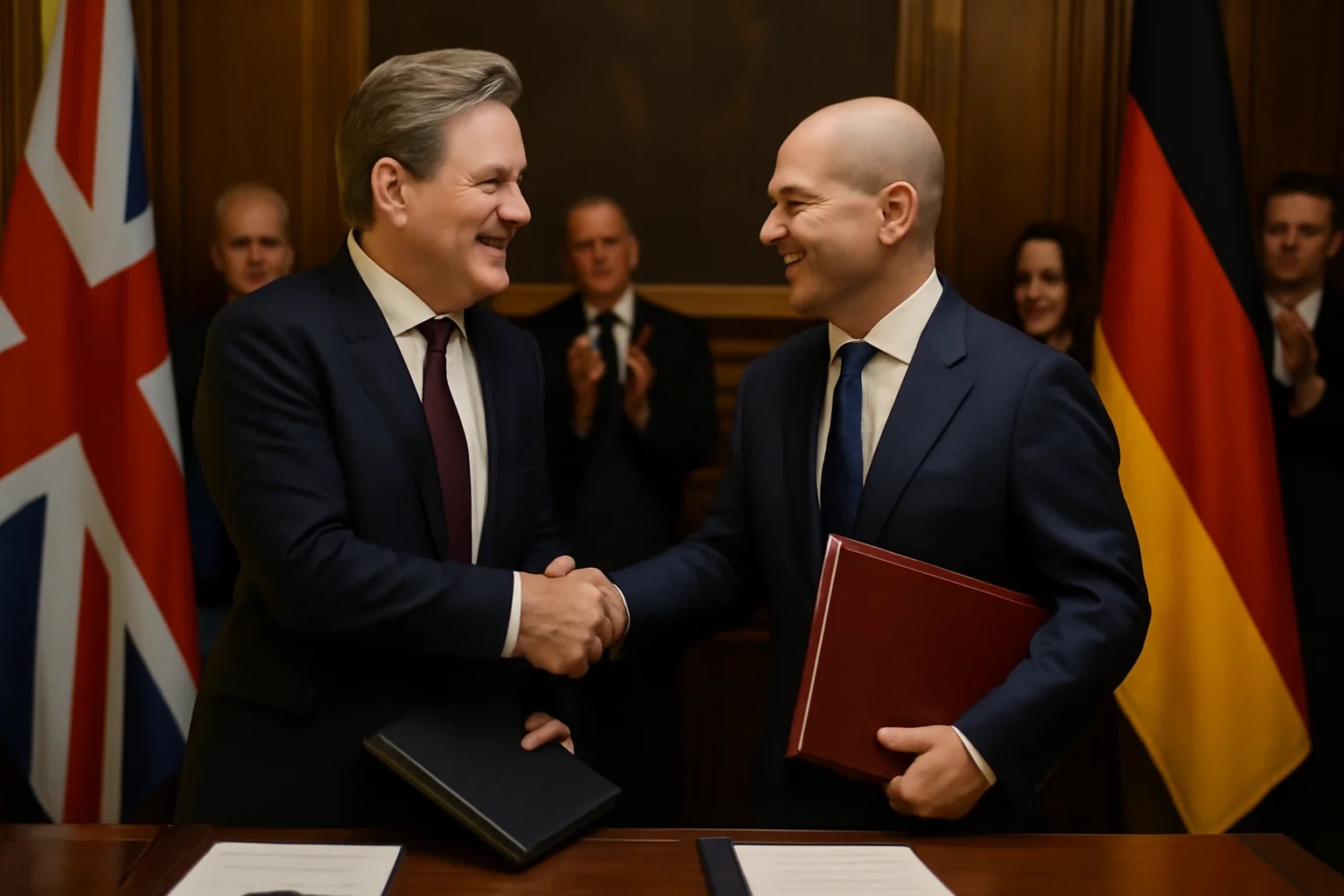
The treaty’s ambitions extend well beyond the immediacy of war and migration, reaching into the heart of post-Brexit Europe and the long task of repairing fractured relationships.Merz was frank about his regret over Britain’s exit from the EU, describing it as an act of “self-harm” that damaged trade and complicated diplomatic cooperation.Yet, in Starmer’s government, Berlin sees an opportunity to rebuild—less antagonistic toward the EU than previous British administrations and eager to restore ties.Trade, investment, and connectivity are cornerstones of the new friendship agreement, with both leaders pledging to streamline travel, ease customs barriers, and build the infrastructure necessary for closer contact.The treaty promises to revive school exchanges, expand scientific partnerships, and support youth mobility, laying the groundwork for a generation that will see Europe as a shared home rather than a collection of competing states.Critically, both sides agreed that the “core Europe” vision—a tightly integrated group of leading powers—must now include Britain, even outside the EU.Annual meetings and joint policy coordination are meant to ensure that the partnership endures beyond the current political climate, embedding it within the daily workings of both governments.Business leaders and academics welcomed the treaty as a pragmatic response to the complex realities of a globalized world, where no nation can afford to go it alone.The hope is that by mending economic and diplomatic ties, the UK and Germany can set an example for others, turning Brexit from a source of division into a catalyst for creative cooperation.With the challenges of the 21st century growing ever more complex, this reset is not merely symbolic—it is a practical necessity for survival and growth.
Advertisement
8. Culture, Education, and the Bonds of People

The treaty recognizes that true partnership is built not just in boardrooms and war rooms, but in classrooms, laboratories, and the hearts of citizens.Cultural exchanges, new education initiatives, and streamlined youth mobility programs form a critical part of the new agreement, aiming to close the gaps left by Brexit and years of strained relations.Both nations committed to facilitating student exchanges and simplifying travel for school groups, making it easier for young people to experience life in each other’s countries.The Kensington Treaty puts special emphasis on people-to-people ties, understanding that future cooperation depends on mutual understanding cultivated from an early age.Art, music, and shared scientific ventures are explicitly supported, with funding for collaborative projects and easier access to research opportunities.The treaty encourages the growth of cultural diplomacy, believing that soft power can be as decisive as military might in shaping the future of the continent.By placing youth and education at the center of their partnership, Britain and Germany are investing in a legacy that will outlast any one government or crisis.The hope is to create a generation for whom the barriers of Brexit and the scars of old wars are distant memories—replaced by a sense of belonging to a larger European story.This human dimension is both the most fragile and the most vital part of the new alliance, requiring sustained commitment from leaders and citizens alike.As the world becomes more interconnected, these cultural bridges will become the true arteries of European strength and resilience.
Advertisement
9. A New Axis
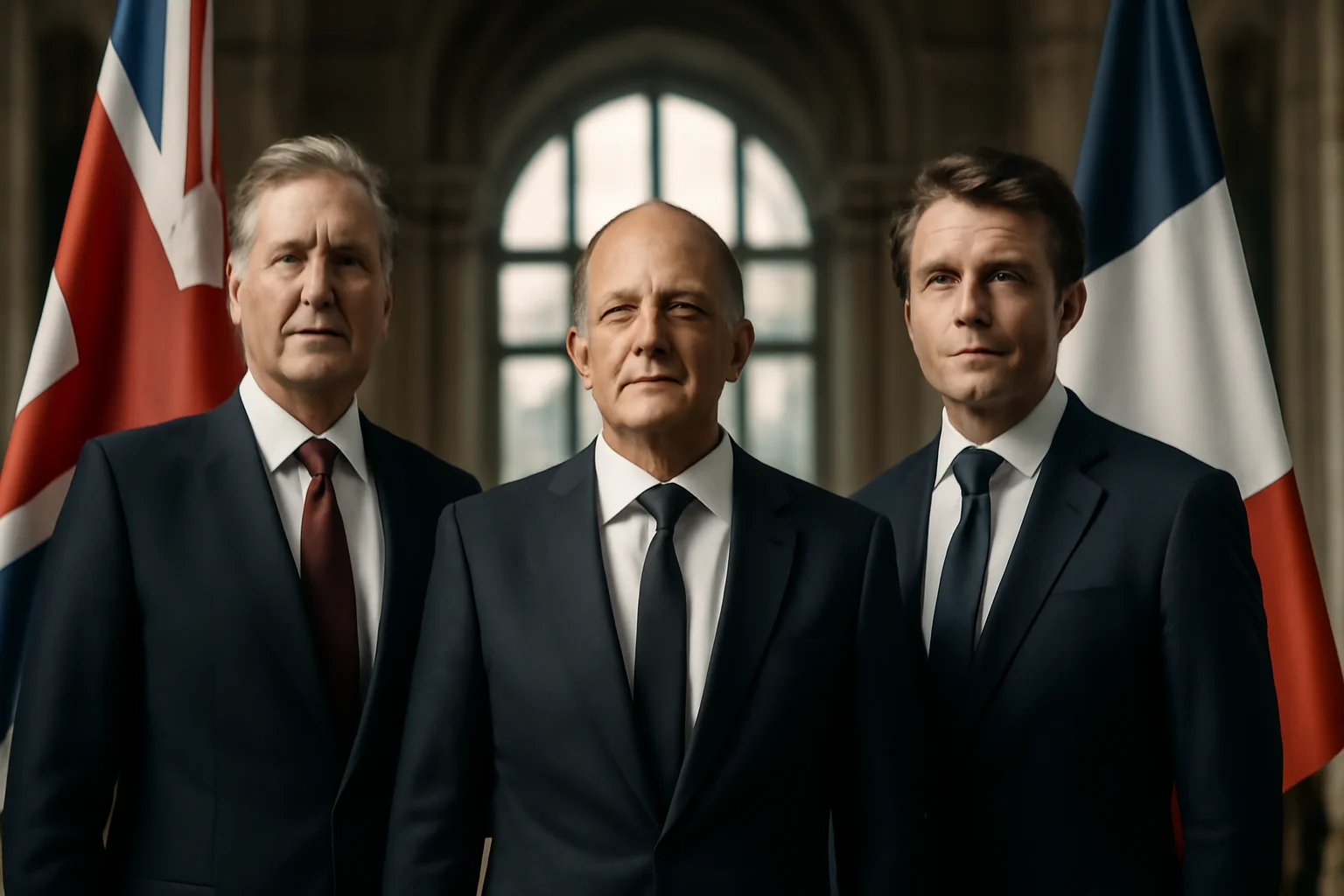
The Kensington Treaty does more than bind two nations; it signals a fundamental shift in Europe’s balance of power, as Britain, Germany, and France forge a new axis for the continent.Merz’s call for a “strategic axis” between London, Paris, and Berlin was received enthusiastically by Starmer, who described the UK’s inclusion as a “statement of ambition” for the future.This alignment reflects a post-American world where Europe can no longer depend on external guarantees but must instead take charge of its own security, migration, and economic prosperity.The E3 format, once a loose diplomatic arrangement, is now crystallizing into a leadership core for European policy—capable of rapid, coordinated responses to emerging crises.Recent joint visits to Kyiv, announcements on nuclear deterrence with France, and trilateral discussions on migration underscore the seriousness of this new bloc.Critics argue that the agreement stops short of creating a formal military or political union, but supporters contend that flexibility is its greatest strength, allowing for rapid adaptation.By positioning themselves at the heart of Europe’s future, the UK, Germany, and France are inviting others to follow their lead, setting standards and agendas for the wider EU and NATO.The “friendship contract” between London and Berlin is thus both a model and a catalyst, intended to bridge the divides opened by Brexit and to resist the pull of populist fragmentation.This new axis is not without its challenges, especially as domestic politics in all three countries remain volatile and opposition parties seize on every misstep.Yet the willingness to move beyond rhetoric and sign binding, actionable agreements shows that Europe’s great powers are ready to shoulder new burdens—and new responsibilities.
Advertisement
10. From Treaty to Transformation
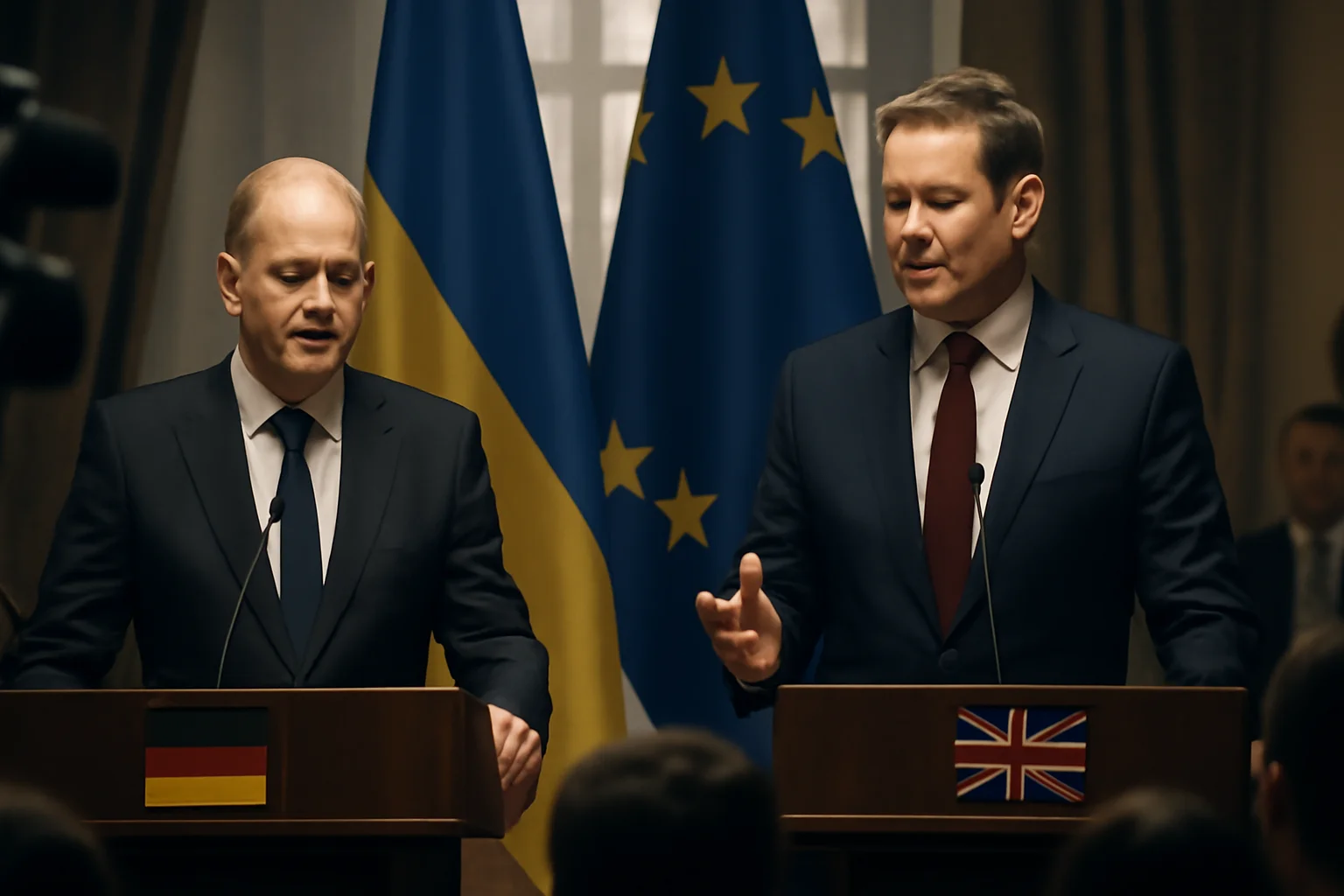
As the cameras stopped flashing and the ink dried on the Kensington Treaty, attention quickly turned to the difficult work of implementation and the unpredictable road ahead.Both governments are committed to holding annual meetings, with leaders reconvening every two years to review progress and set new priorities, embedding the partnership deep in the machinery of state.Success will be measured not by headlines, but by the tangible benefits delivered: weapons and aid for Ukraine, safer borders, more vibrant economies, and new opportunities for young people.Skeptics caution that the treaty is only as strong as the political will behind it, warning that future crises or changes in leadership could test its durability.But Merz and Starmer, both centrists governing polarized societies, believe that their shared resolve can weather storms—drawing on the lessons of history and the urgency of the present.As economic stagnation and geopolitical uncertainty cast long shadows, the treaty stands as both a shield and a beacon: proof that even old rivals can become new allies in pursuit of common good.Europe’s security, prosperity, and unity now rest not on nostalgia for the past, but on the painstaking construction of new, dynamic partnerships.The Kensington Treaty, born out of necessity but executed with vision, is more than a document—it is a call to action for all who care about the future of the continent.As Merz said, “We are really on the way to a new chapter.” The next pages will be written not just by leaders, but by the millions whose lives and hopes now depend on the success of this historic agreement.The world is watching. The work begins now.
Advertisement
Advertisement
You May Also Like


